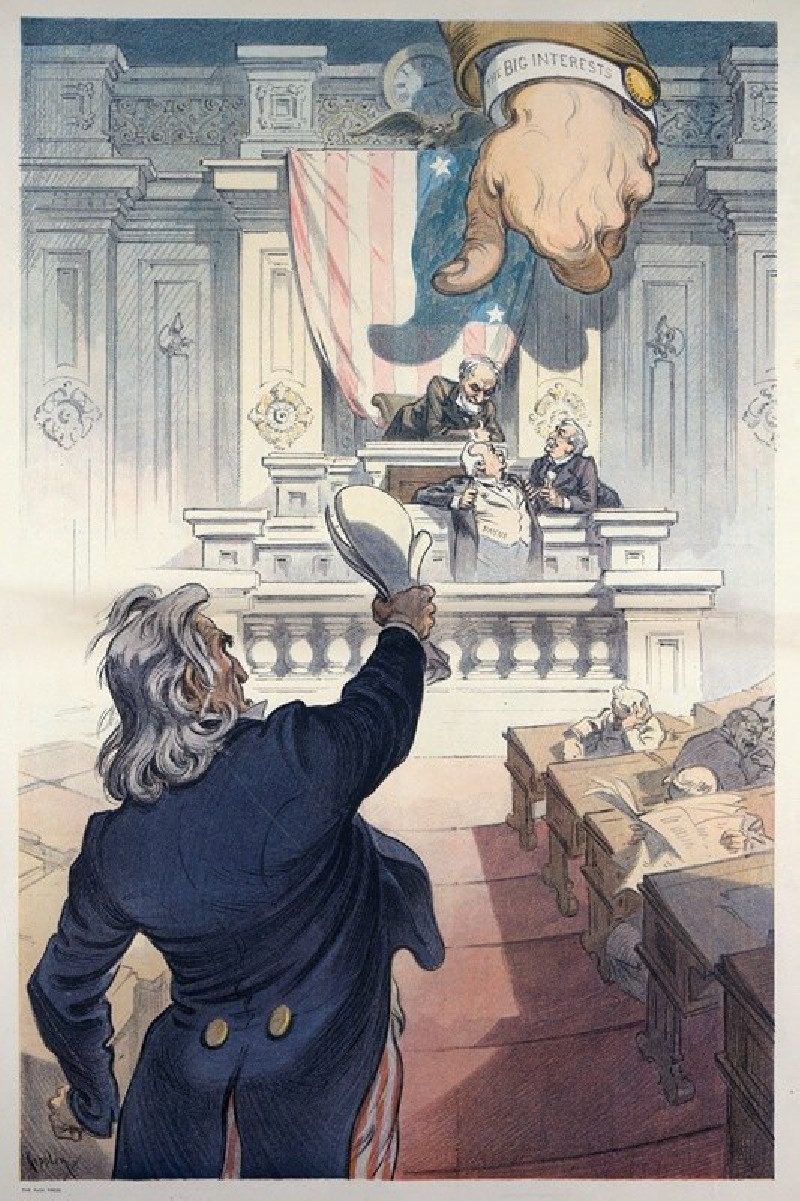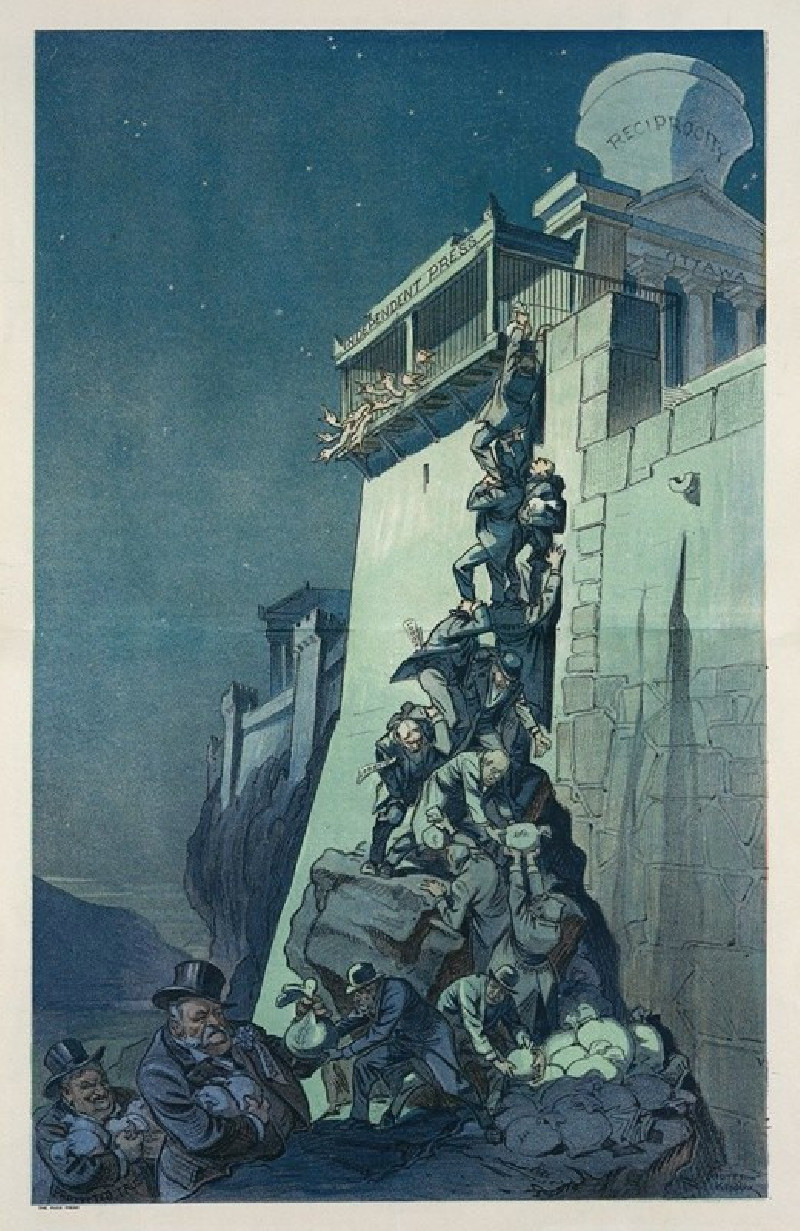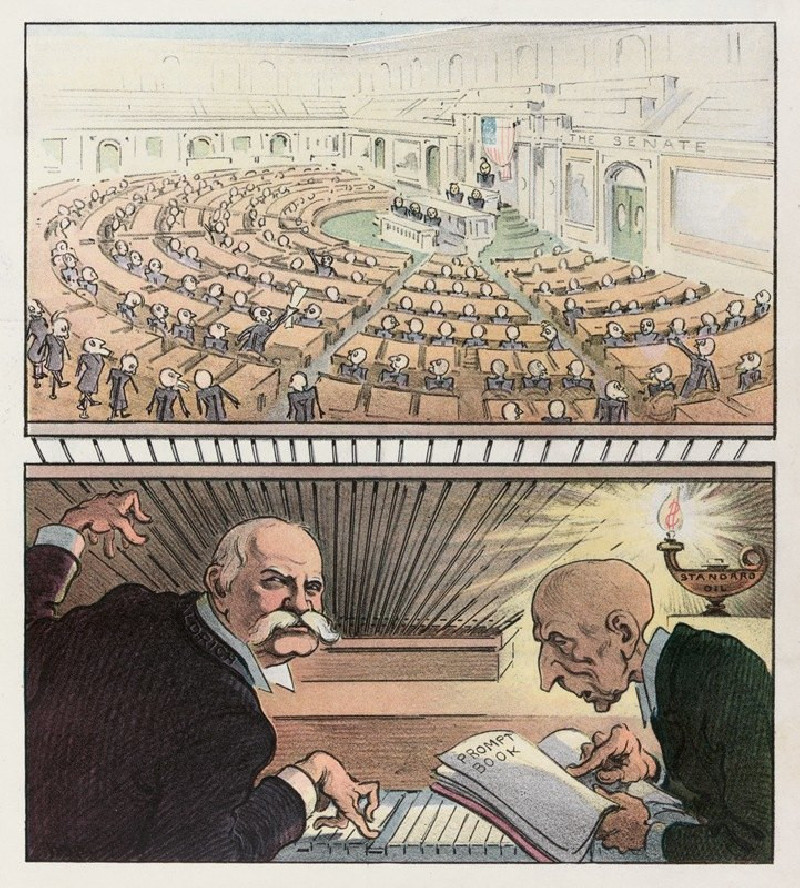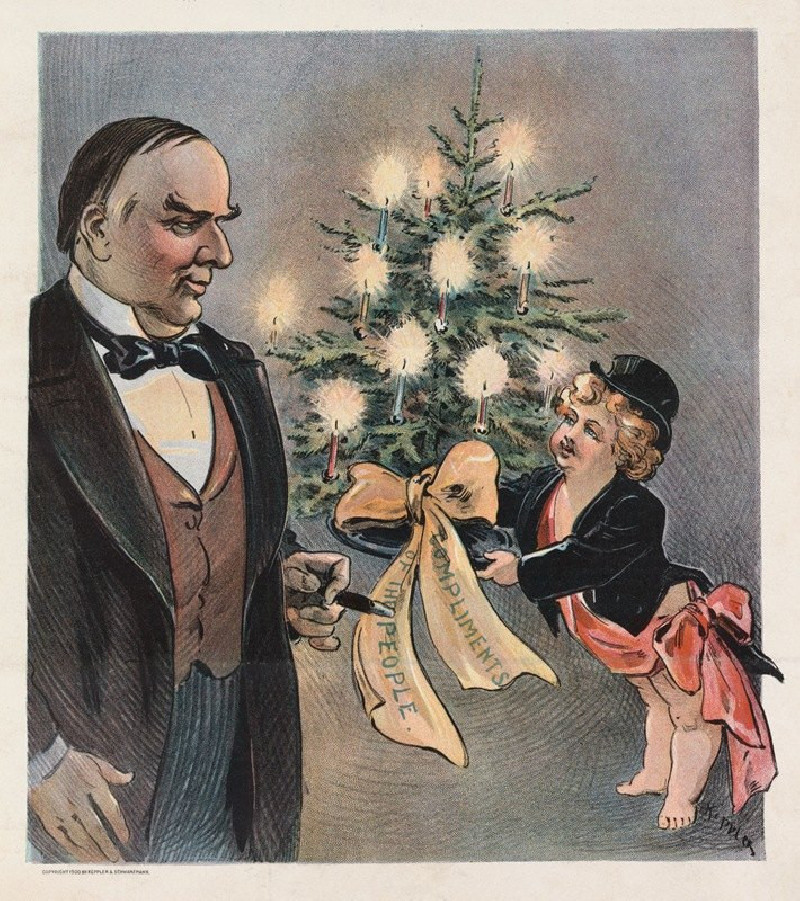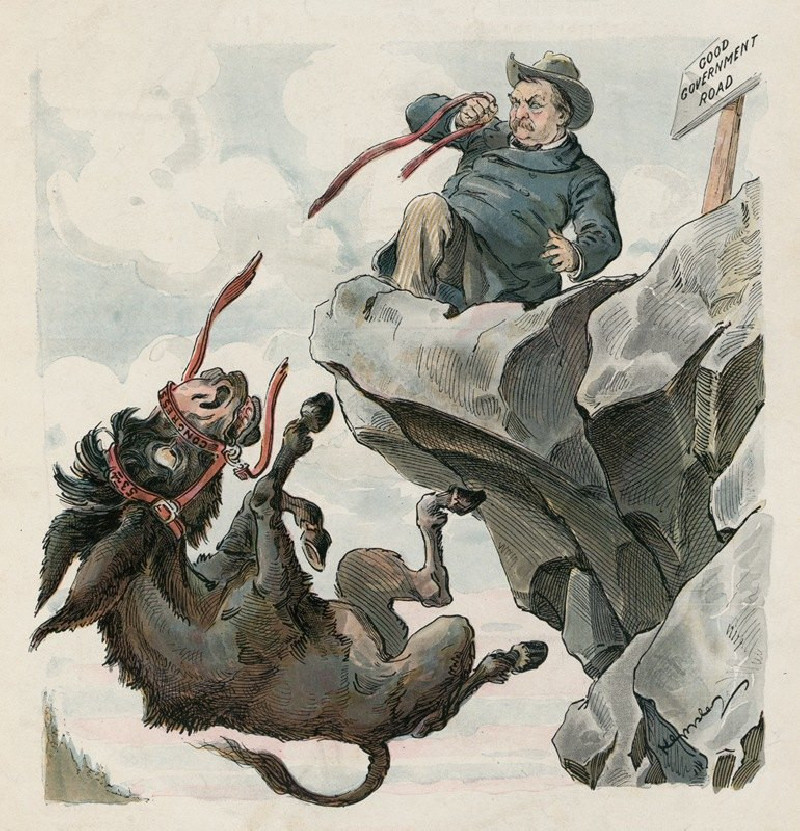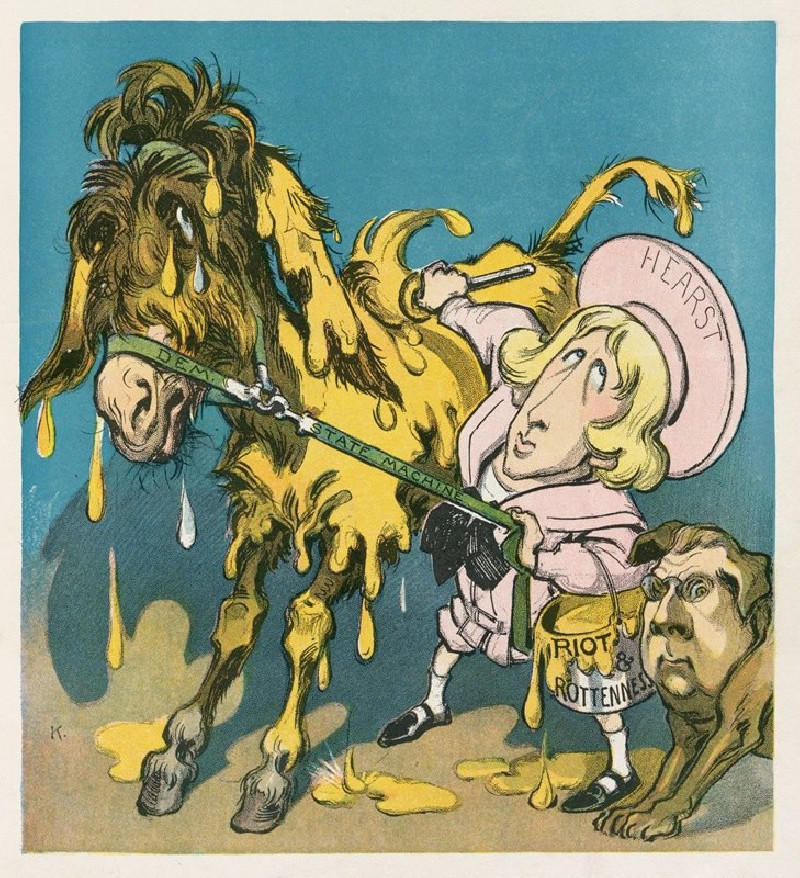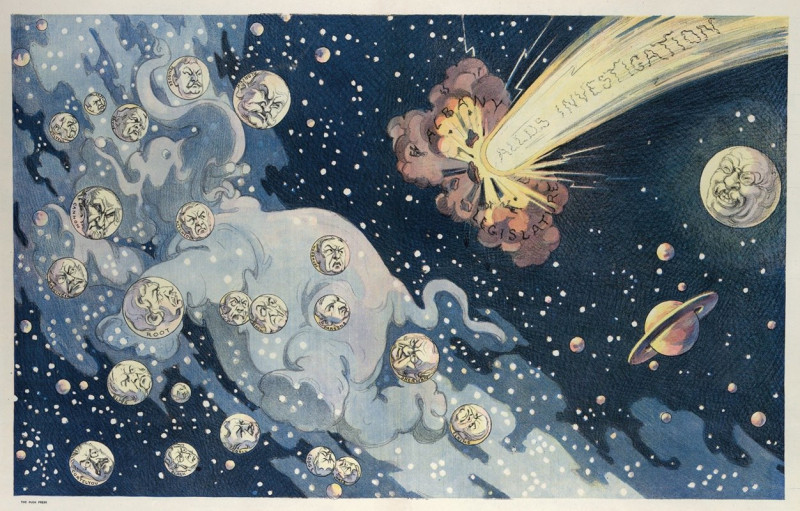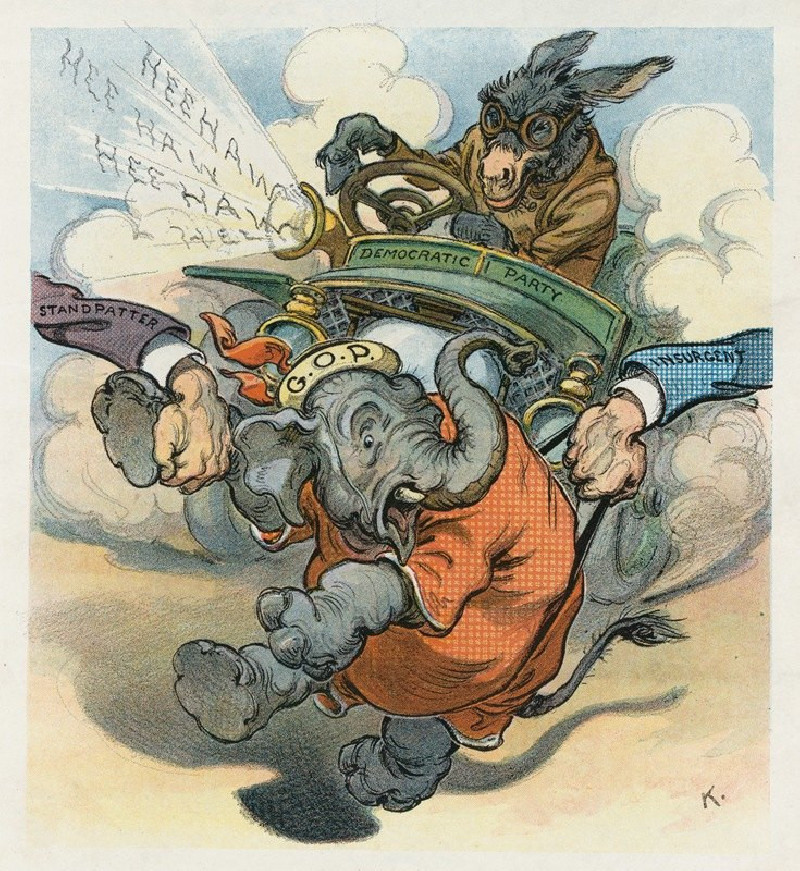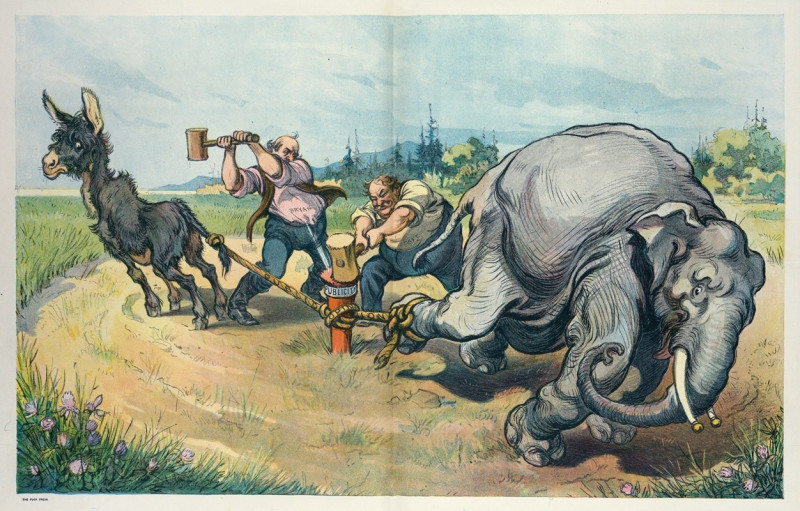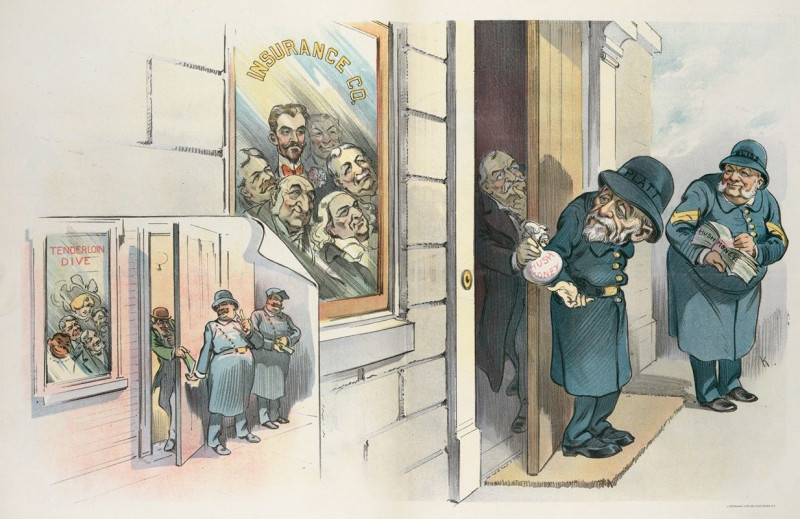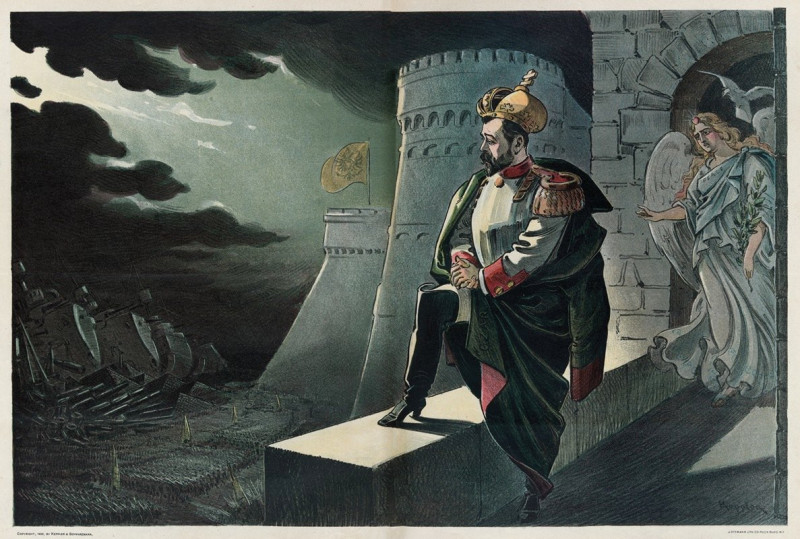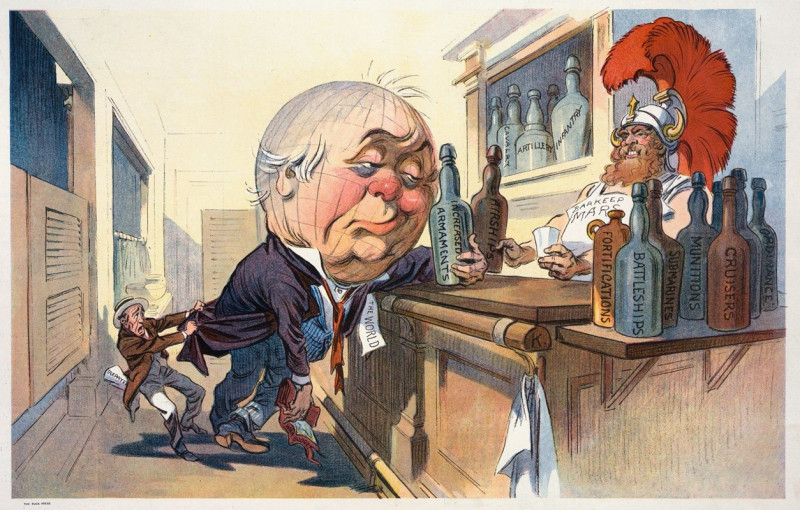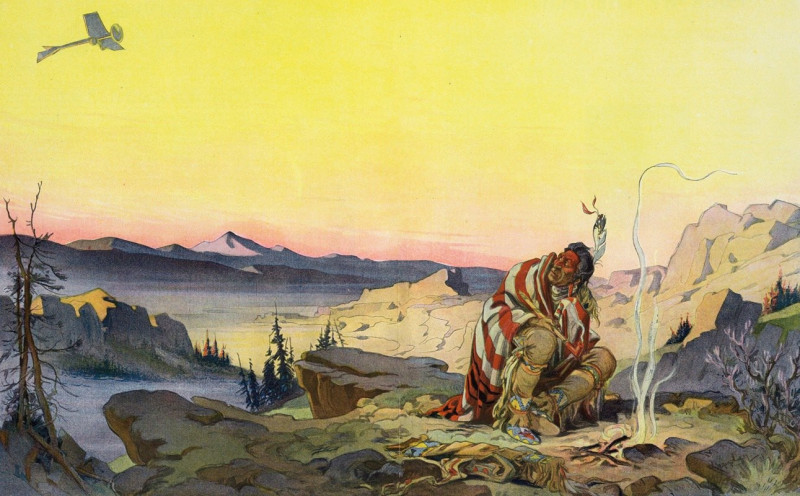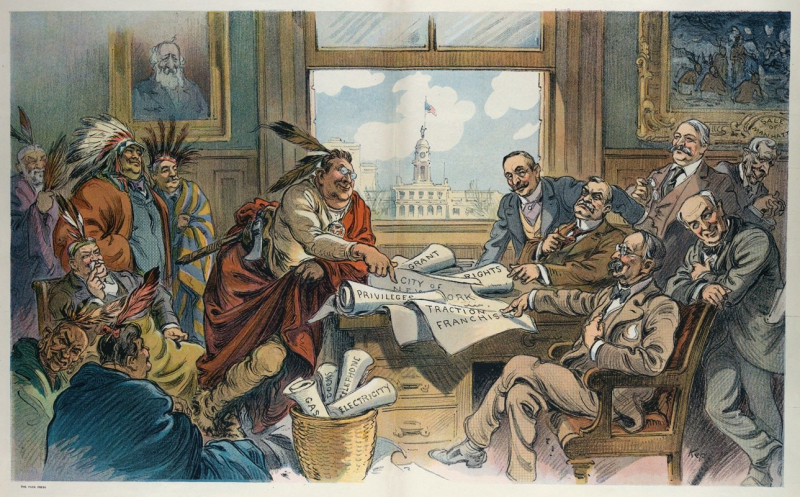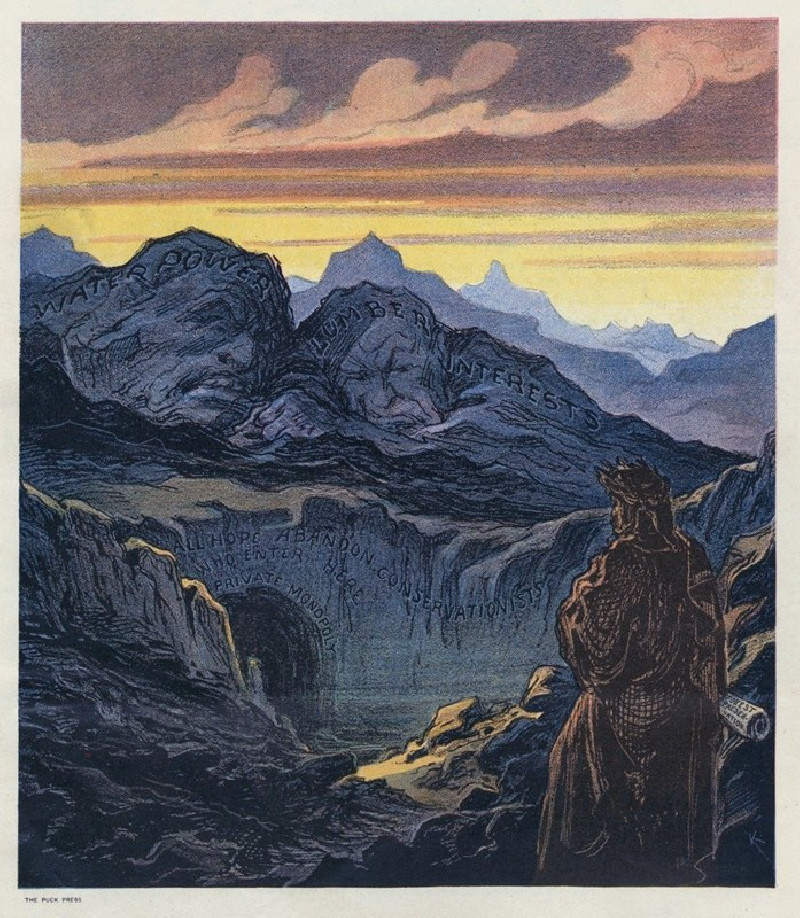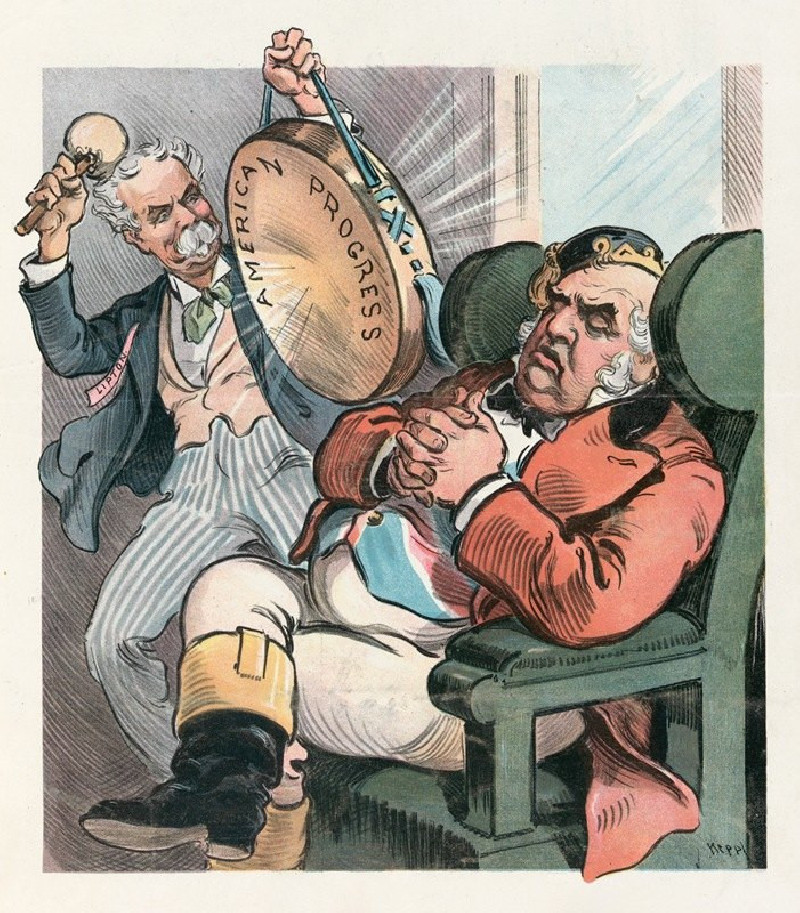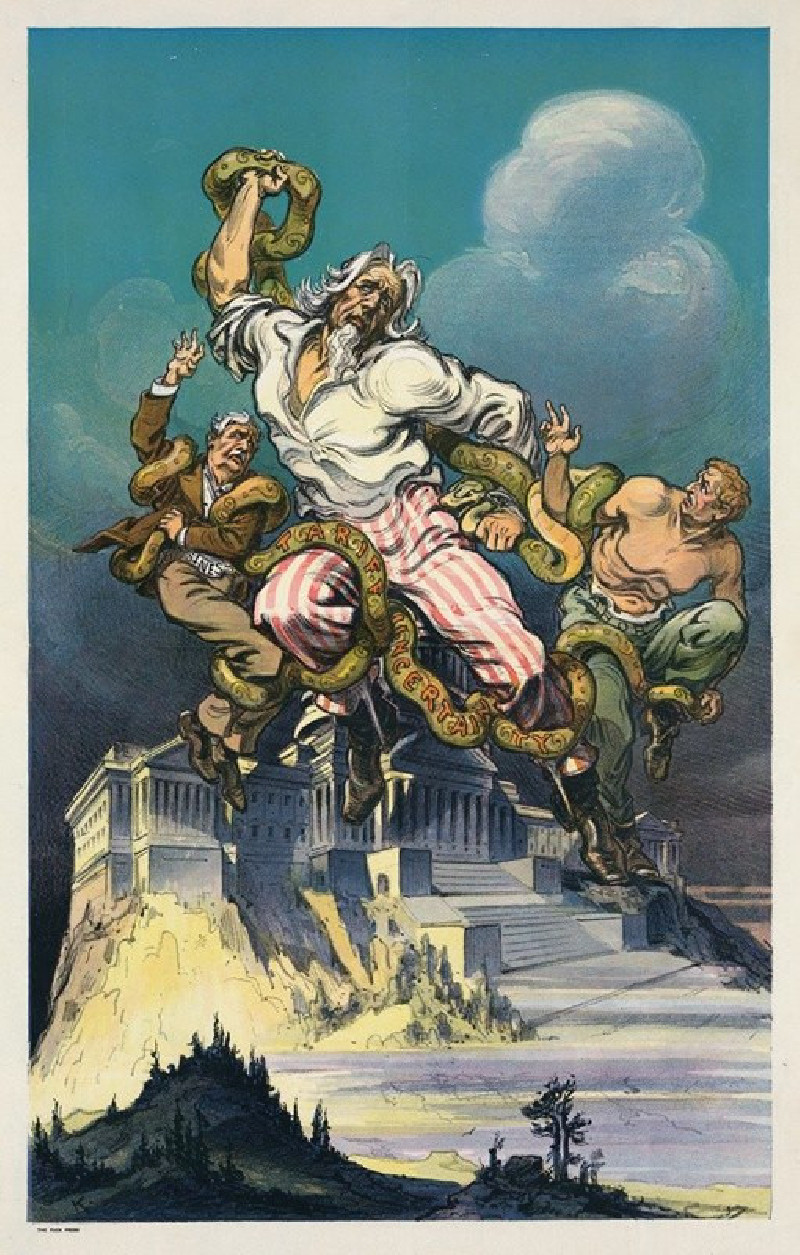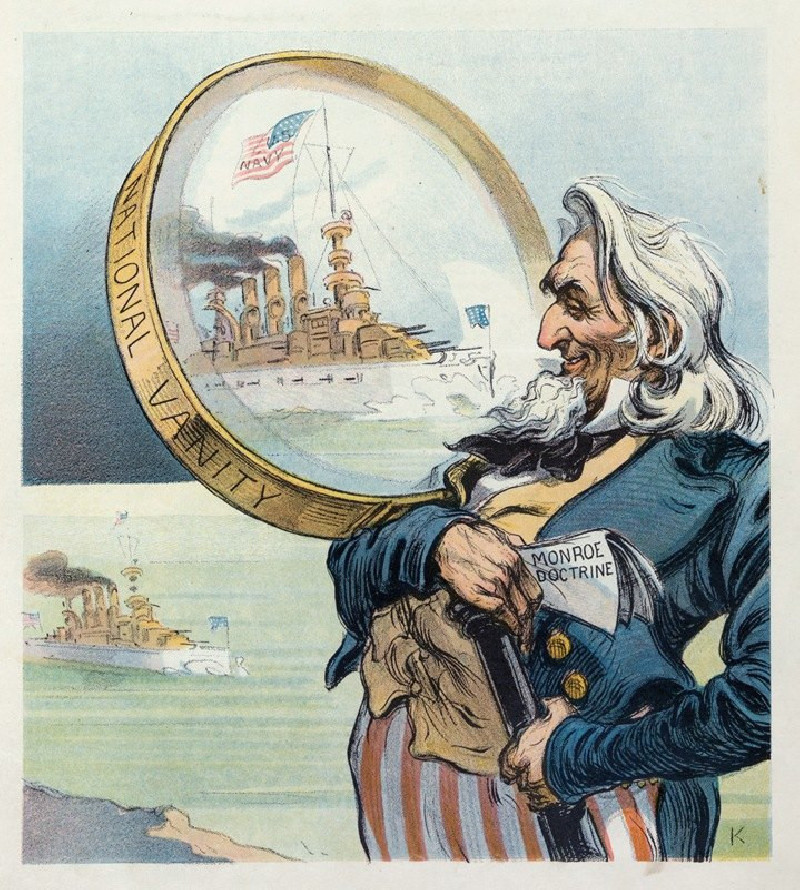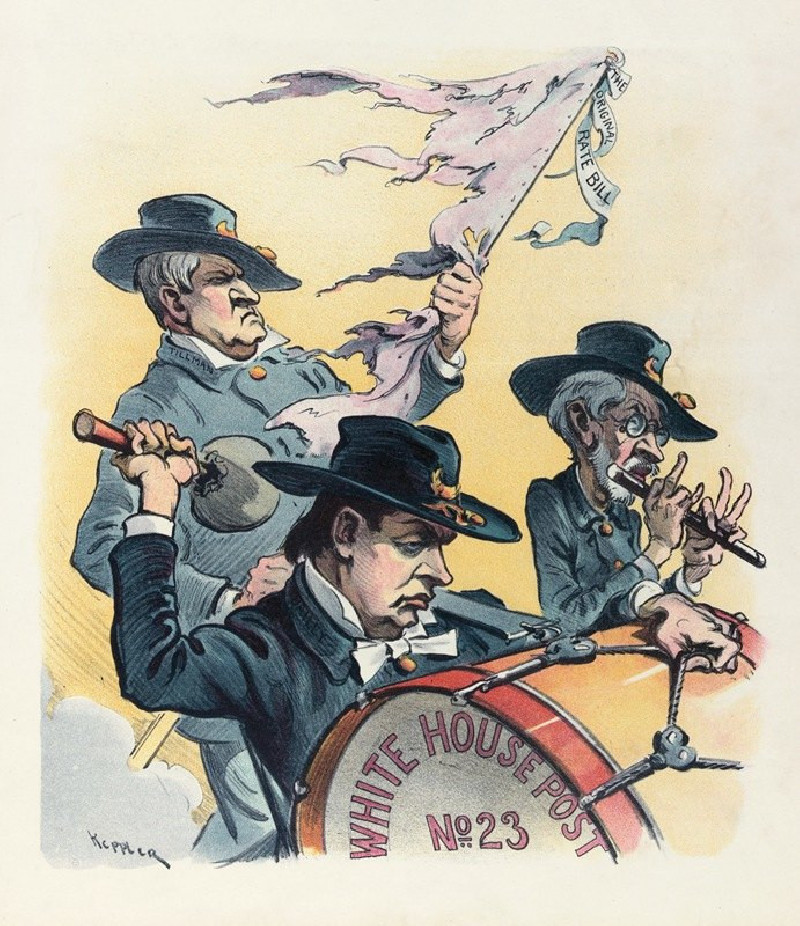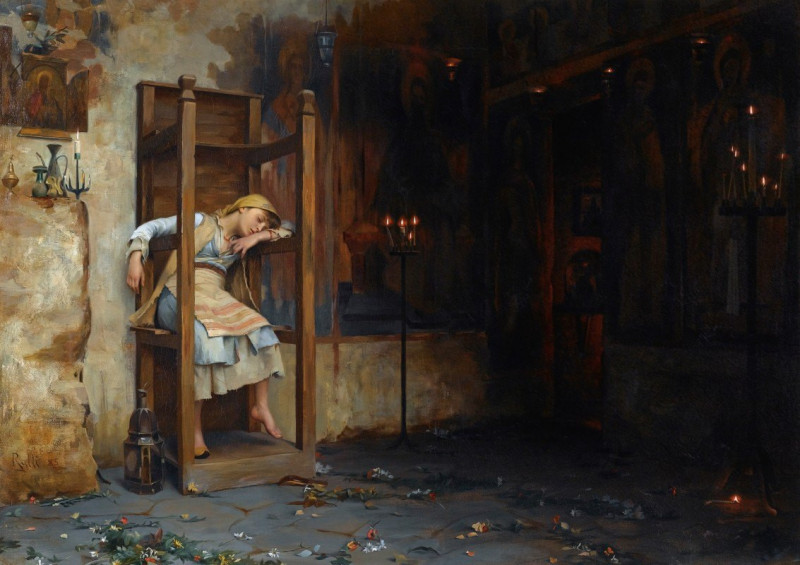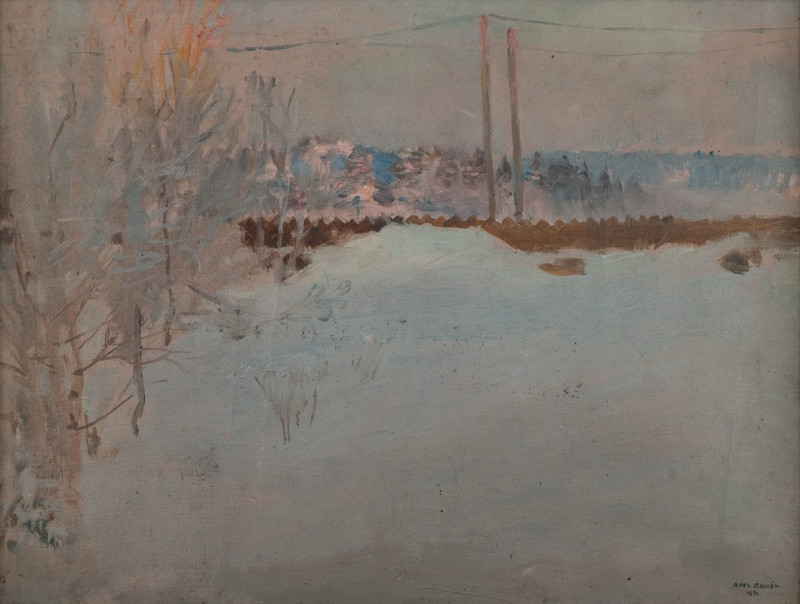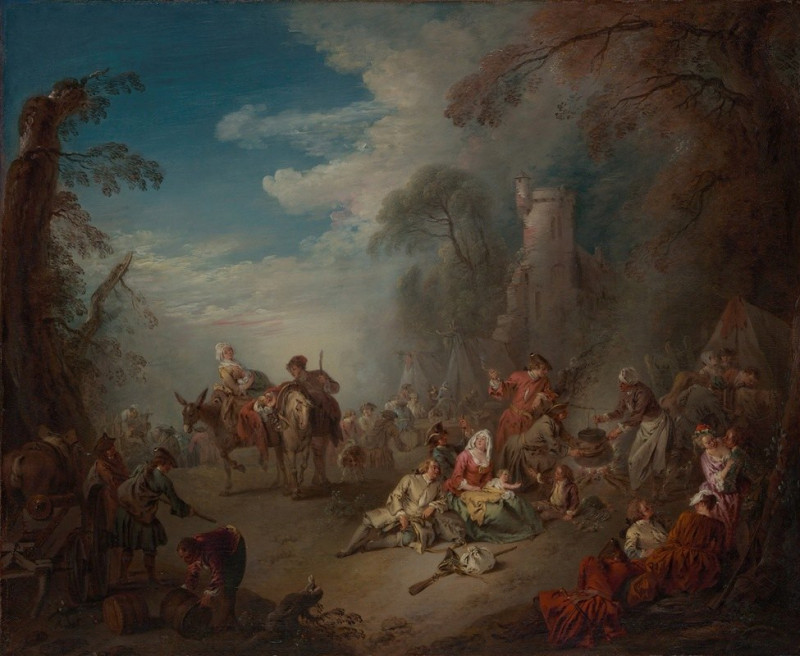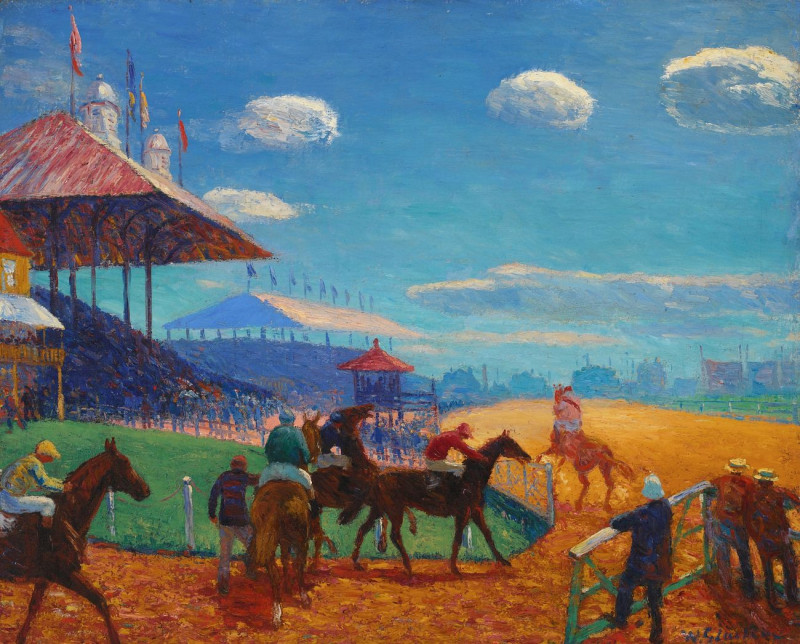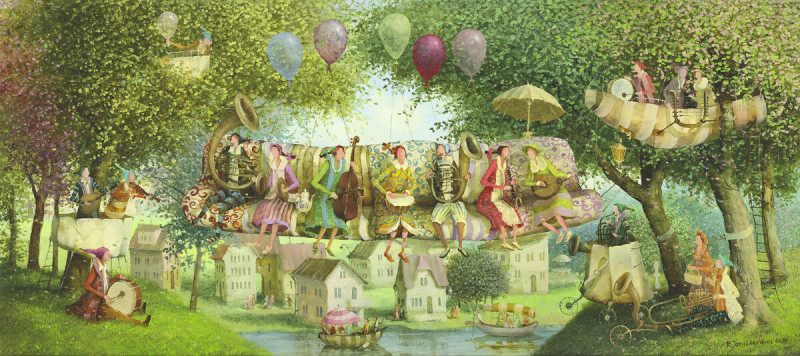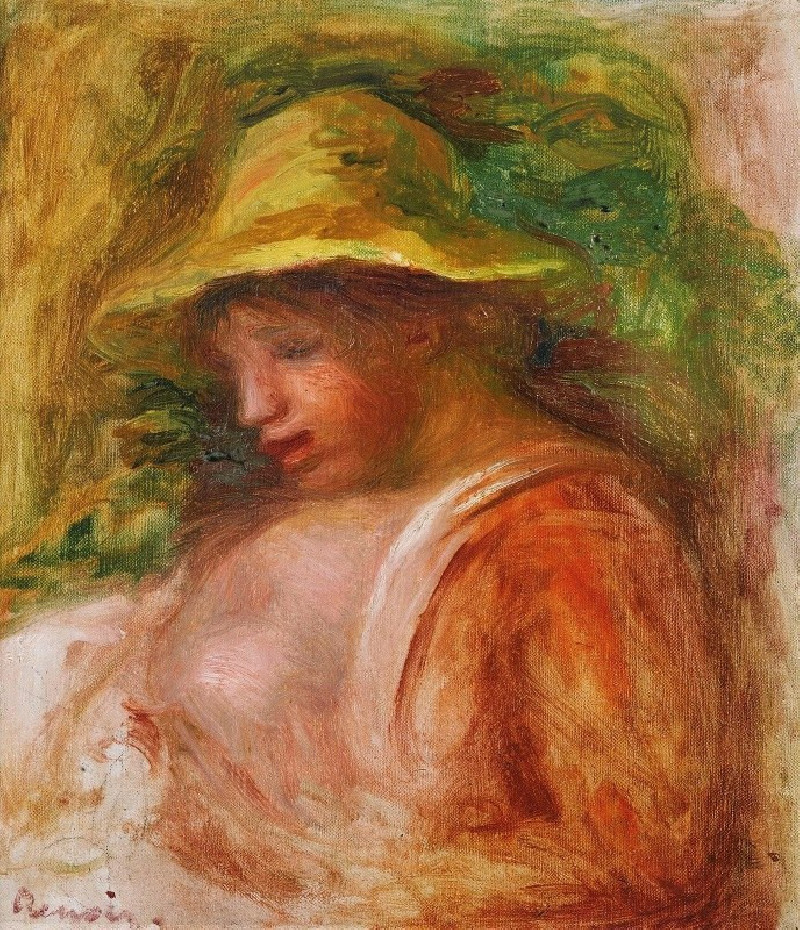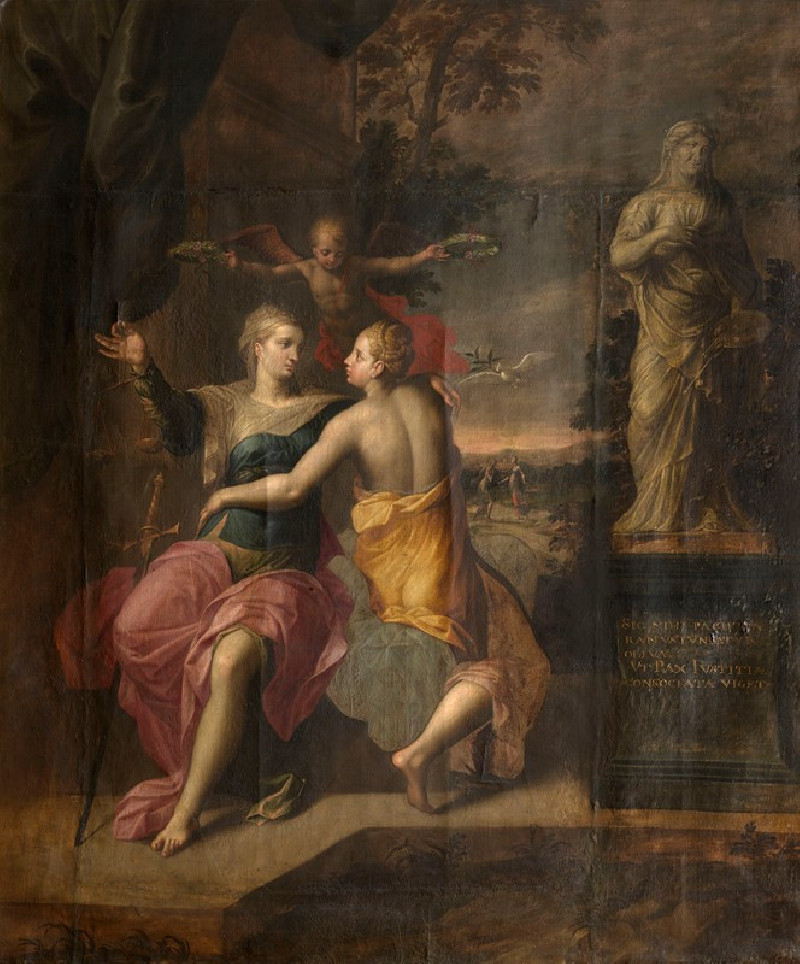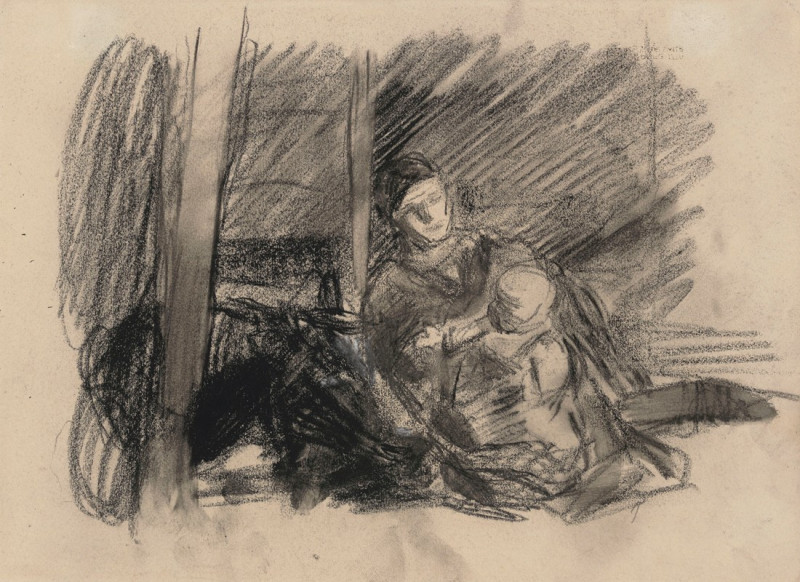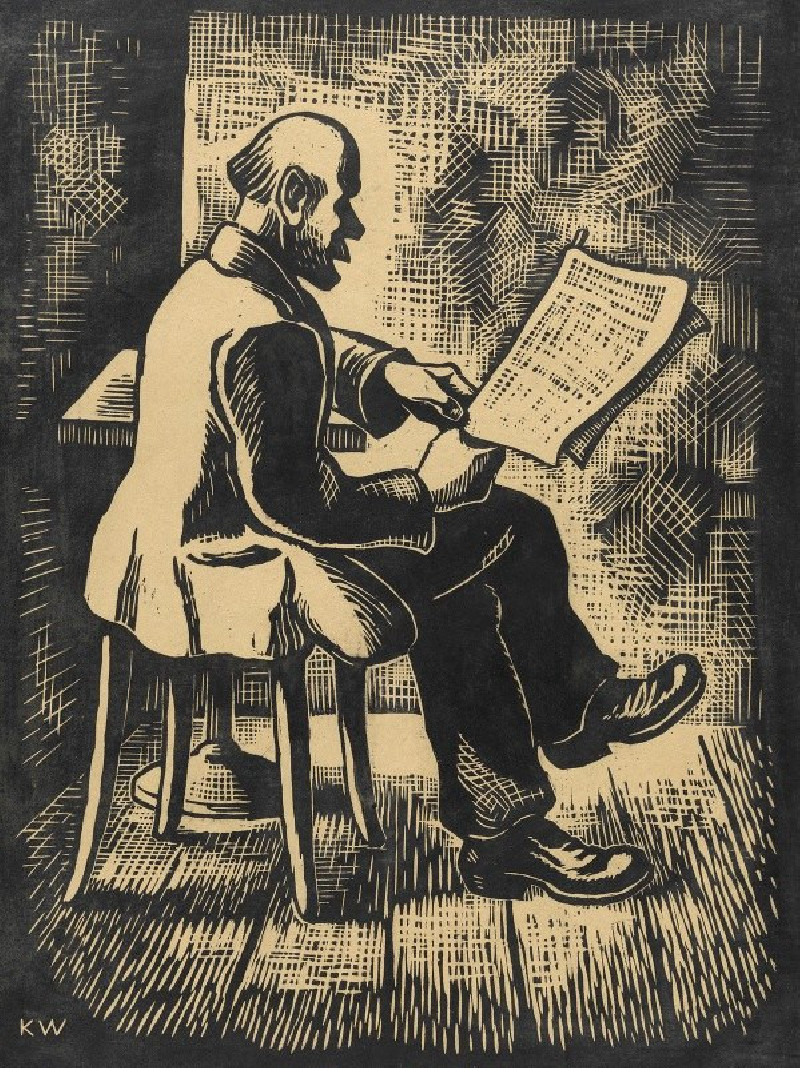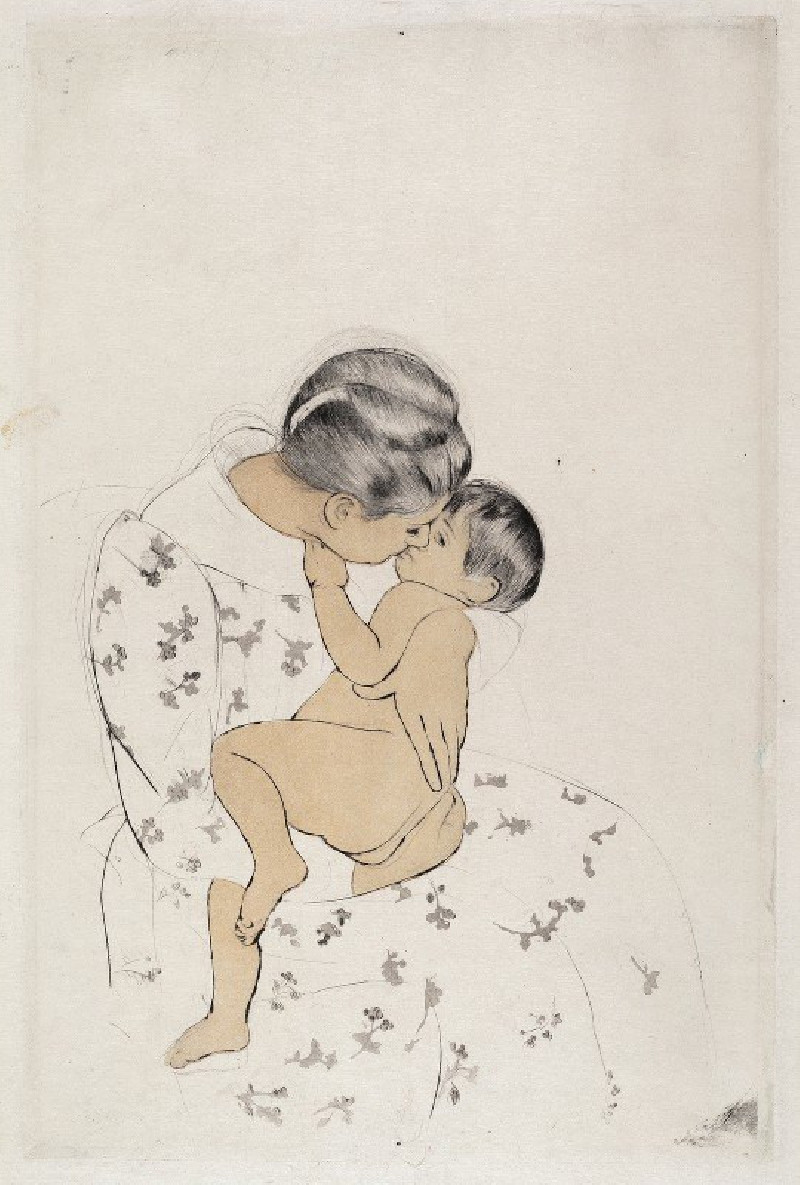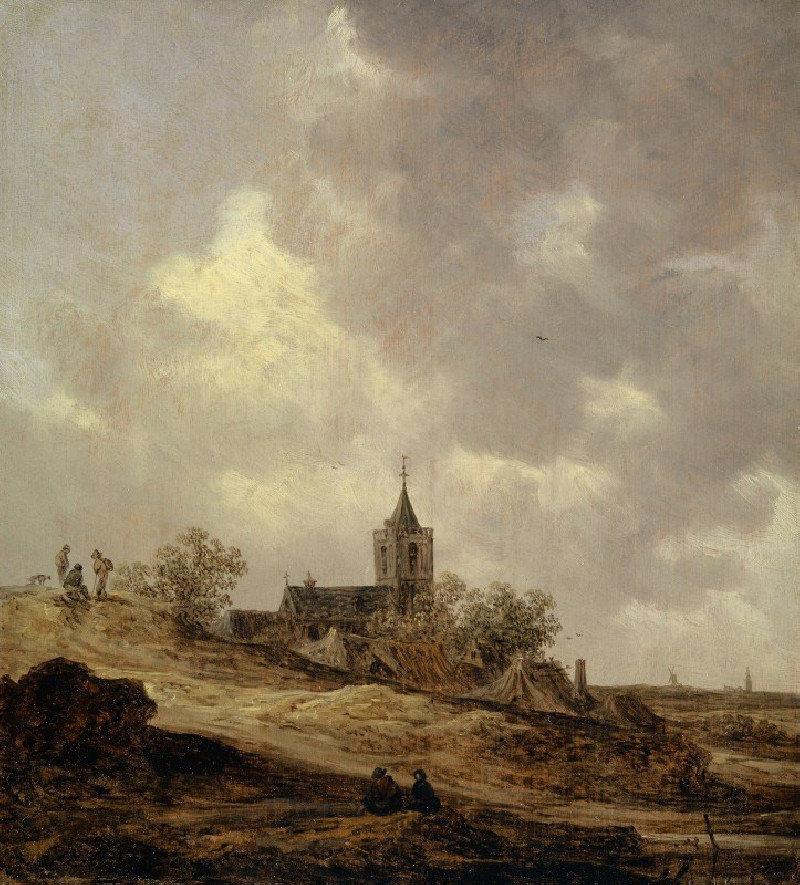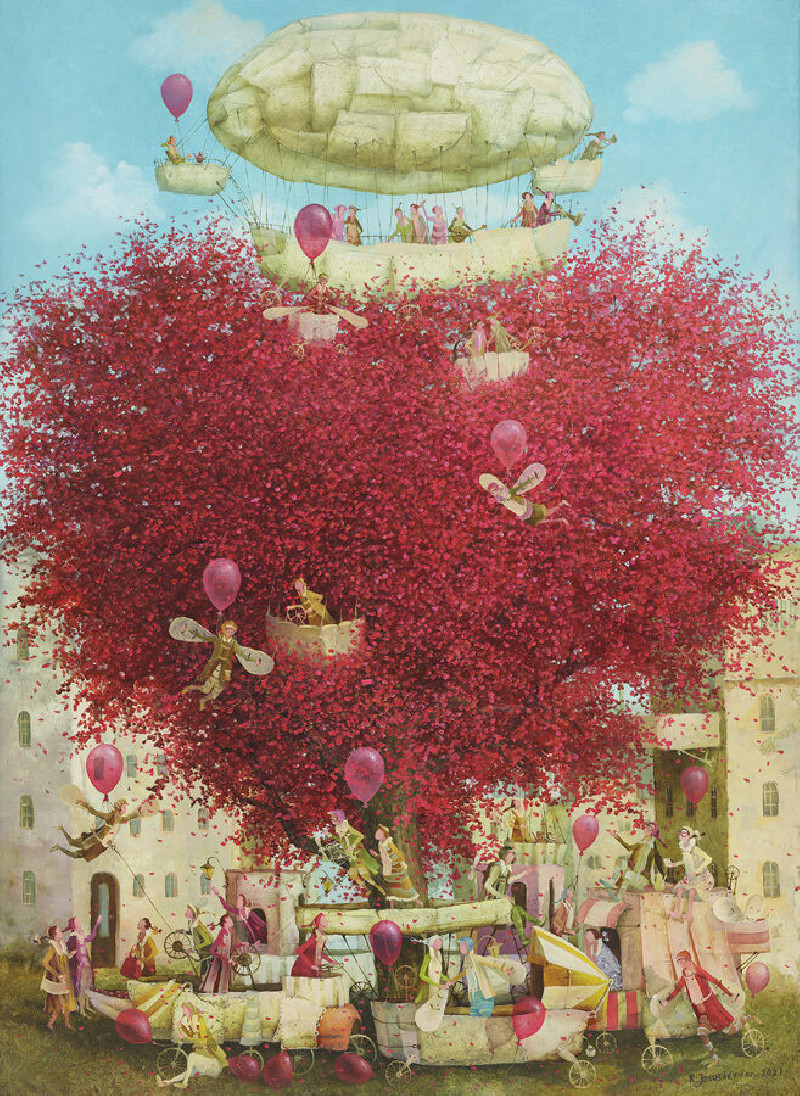The leader of the minority (1908)
Technique: Giclée quality print
Recommended by our customers
More about this artwork
In the evocative painting "The Leader of the Minority" by Udo Keppler, dated 1908, viewers are confronted with a satirical depiction of American politics that remains distressingly relevant. This work, alive with vivid colors and dynamic characters, presents a scene inside what appears to be a legislative chamber, perhaps Congress.At the center of the composition is a hand labeled "BIG INTERESTS," reaching down imposingly over figures who personify the U.S. government. This oversized hand ominously dangles a figure, representing the leader of the minority, as a puppet, dressed in the symbolic attire of Uncle Sam. This manipulation suggests the overwhelming influence of private and corporate interests over elected officials, subverting democratic processes. Below, a commanding figure with a hat, assumingly the minority leader whose role has been usurped by external forces, gestures emphatically toward the scene before him. His demeanor expresses outrage and helplessness at the evident control that these "big interests" exert over the governing bodies.The setting is intricately detailed, capturing the grandeur typical of governmental buildings, yet this is overshadowed by the somber mood of the painting. Surrounding figures, likely other politicians, appear disengaged or resigned, reinforcing the feeling of ineffectiveness and despondency that pervades the space."The Leader of the Minority" masterfully uses satire to critique the intersection of business and politics, and its stark imagery serves as a powerful commentary on the struggles against corporate dominance in the political sphere.
Delivery
Returns
Udo J. Keppler, since 1894. known as Joseph Keppler, Jr., was an American political cartoonist, publisher, and Native American advocate. The son of cartoonist Joseph Keppler (1838–1894), who founded Puck magazine, the younger Keppler also contributed to cartoons, and after his father's death became co-owner of the magazine under the name Joseph Keppler. He was also a collector of Native American artifacts.

